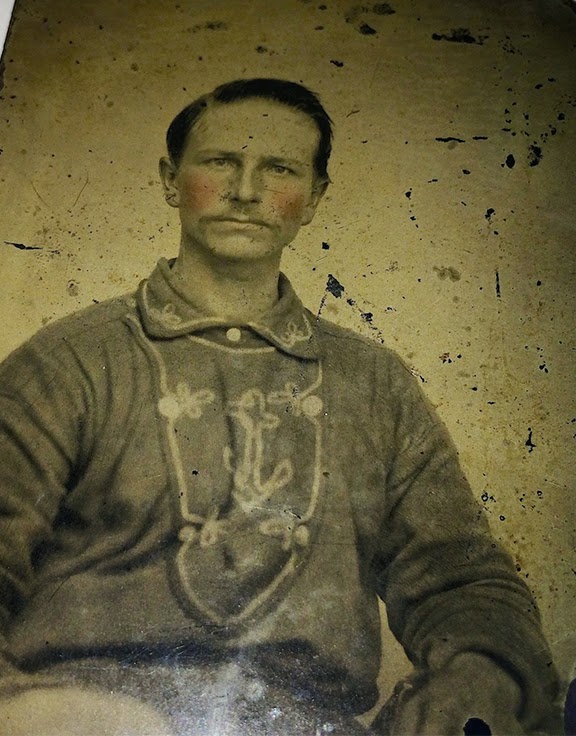May 10, 2015
We know how Pancho got started in the revolution business: On November 20, 1910 on a small ranch called La Cueva Pinta in the
mountains, not far from Chihuahua, a group of armed me sat around the
campfire and elected their military leaders. Francisco Villa was elected
to lead 28 men, his first assignment in the history of the Mexican
Revolution.
Daily Whip Out: "Blue-eyed Vaquero"
We know that some of Pancho's men were psychopaths: One mean dude was Rodolfo
Fiero: it was said he once shot a stranger in Chihuahua to settle a bet
on whether a dying man falls forward or backwards. Fierro walked up to a stranger and shot him in the head and then won the bet when the man fell forward.
Daily Whip Out: "Badges?"
We know, from newspaper reports why many in Mexico loved him: Edwin Emerson, a newspaperman, reported "Villa's greatest asset is his
personality. As a former outlaw and bandit, who successfully stood his
ground against Porfirio Diaz' soldiers and rurales for over ten years,
Villa is idolized by all the lower classes of Mexico." He goes on to
point out that Villa is a "splendid rider" something the "all Mexicans
set great store by," and that he is a "dead shot." Whenever he is
interviewed by the press "he always makes it a point to lay stress on
the fact that he is a simple, uneducated unlettered man who never has
had any advantages of culture."
Daily Whip Out: "Vaquero In Corral"
We know that Pancho was ingenious about how to get men to fight: Villa also convinced recalcitrant peasants to fight far from their
native regions by allowing them to take their wives, girlfriends, and
mistresses along. These women were known as soldaderas, and sometimes as
adelitas, a name derived from a popular song.
We know that young men sometimes don't need too much convincing when it comes to a chance to fight: When John Reed spoke with Villa's soldiers he asked them what they were
fighting for and one of them said "justice," but one soldier asked Reed if there was a war in
the United States. When Reed answered no, the soldier replied "How do
you pass the time then. . ."
We know Villa was good at winning hearts and minds: Pancho was able to talk many peons into fighting for his cause because
they were being paid only five centavos a day non the haciendas. Another
reason Villa was so successful in raising an army is because when he
captured federal army soldiers he often gave them the choice of joining
Villa's forces or being shot. Most had been pressed into the federal
army against their will, and with the promise of better pay, they almost
always joined the fight, and never went back.
We know that in order to get men to fight, you sometimes need to have someone burn the boats: One of Villa's commanders, Manuel Banda was in charge of making the
soldiers fight. He roamed behind the front lines on his motorcycle and said, "I have killed
many, in some battles I may have killed as many of our men as the
federal troops have done."
Daily Whip Out: Manuel Banda
We know that Pancho Villa was driving a Dodge on the streets of Parral when he was assassinated.
We know that he was retired and living on a government pension on a hacienda paid for by the Mexican government.
We know he was a little bitter about his ten years of fighting to replace the Hacendados who ruled northern Mexico with an iron fist.
Daily Whip Out: "El Jefe"
We know he was insecure about his own illiteracy and lack of culture. But at least he had his priorities straight
"I fought for ten years for them. . .but most of them were too ignorant to understand my ideas. . . Poor ignorant Mexico. Until they have education nothing much can be done."
—Pancho Villa, explaining why he quit fighting

















































